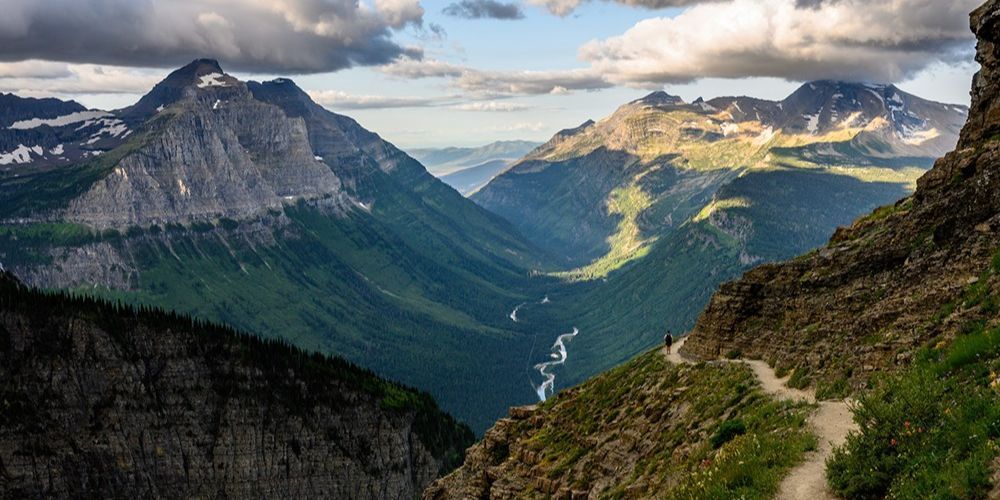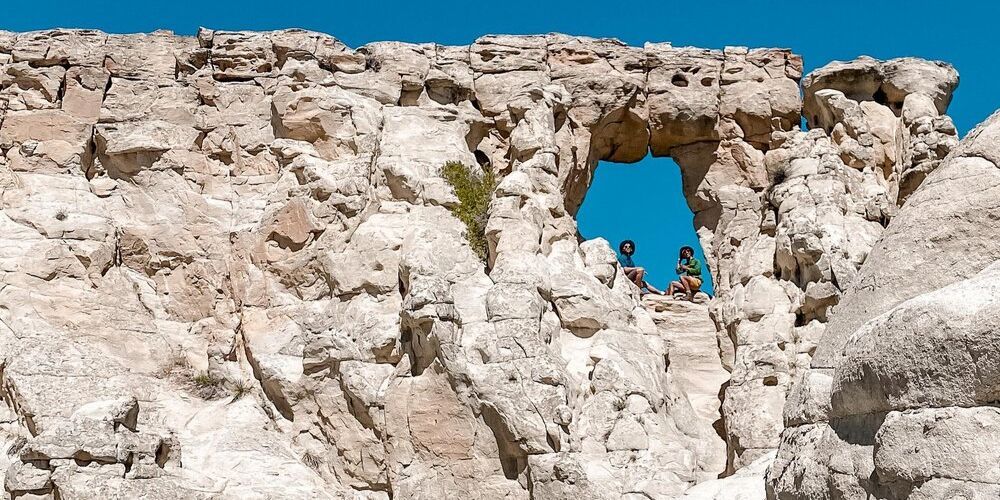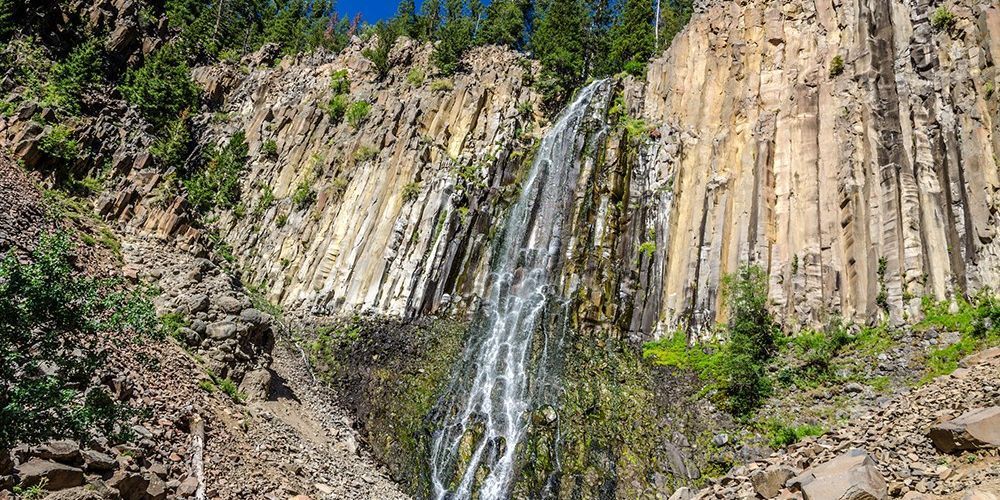Discover the Best Hiking Trails in Montana: Adventure Awaits!
Cradled amidst Montana's rugged wilderness are hiking trails that promise adventure for every kind of explorer. From crystal-clear alpine lakes reflecting towering peaks in Beartooth Wilderness to sprawling valleys carved by ancient glaciers in Glacier National Park, Montana is a treasure trove for those who crave both tranquility and thrill. Imagine tracing paths where morning sunrays filter through dense forests, unveiling meadows carpeted with wildflowers and serenaded by bird songs—each hike here tells its own tale.
To help you uncover these hidden gems, we've meticulously researched not just popular routes but also the subtle nuances that make each trail unique. Through first-hand experiences and reliable sources, we’ve gathered vital information on trail conditions, what to pack, when to go, and crucial safety tips. Embarking on a journey through Montana's best hiking spots will now be less about trial-and-error and more about fully immersing yourself in nature's grandeur.
The best hiking trails in Montana include Glacier National Park's Highline Trail, Yellowstone National Park's Mount Washburn Trail, and Bob Marshall Wilderness Complex's Chinese Wall Trail. These trails offer breathtaking views, diverse terrain, and opportunities to experience Montana's natural beauty.

Popular Hiking Trails in Montana
Montana is an adventurer's haven, offering a treasure trove of hiking trails that cater to all levels of hikers. Here are some standout trails that showcase the diverse, breathtaking landscapes waiting to be discovered:
Grinnell Glacier Trail
Nestled in Glacier National Park, the Grinnell Glacier Trail spans 7.6 miles round-trip and treats hikers to awe-inspiring views of glacier-carved valleys, vibrant wildflowers, and the captivating sight of the Grinnell Glacier itself. The trail is a perfect blend of natural beauty and a moderate level of challenge, making it ideal for both seasoned hikers and beginners seeking a memorable experience.
The appeal of the Grinnell Glacier Trail lies not only in its scenic grandeur but also in its accessibility. While challenging enough to provide a sense of accomplishment, the trail remains manageable for various skill levels, making it an enticing choice for a wide range of hikers.
Beaten Path
Stretching across 26 miles within the Absaroka-Beartooth Wilderness, the Beaten Path trail is renowned for its picturesque alpine lakes, enchanting waterfalls, and panoramic mountain vistas. This one-way trail offers a captivating journey through diverse terrains, from lush meadows to rugged mountain passes, promising hikers an unforgettable adventure that showcases Montana's unspoiled natural beauty at its finest.
The Beaten Path stands as a testament to Montana’s untamed wilderness at its best, luring hikers with promises of secluded serenity and striking panoramas that reward every step taken along this extraordinary trail.
Highline Trail
A classic route within Glacier National Park, the Highline Trail spans 11.6 miles from Logan Pass to Granite Park Chalet, offering sweeping vistas and abundant opportunities for wildlife sightings. Hikers can expect a captivating journey through subalpine meadows with stunning views of glacially-carved peaks dotting the horizon, all while relishing frequent encounters with local fauna.
Imagine walking along the ridgeline with jaw-dropping views on either side – this is what makes the Highline Trail an iconic experience treasured by hikers seeking an immersive encounter with Montana's raw natural beauty.
These renowned trails reflect just a glimpse of Montana's abundant natural wonders waiting to be explored. With their unique features and breathtaking scenery, they offer an adventure of a lifetime for hikers seeking to immerse themselves in the rugged beauty of Big Sky Country.
Now that we've marveled at Montana's pristine trails and their captivating allure, let's dive into essential tips for hiking that will elevate your outdoor adventures to new heights.
Essential Tips for Hiking
Hiking in Montana's vast wilderness is a thrilling experience, but it requires careful planning and preparation to ensure a safe and enjoyable journey. Here are some crucial tips to keep in mind before you embark on your hiking adventure.
Tip I - Plan Your Route
Planning your route is the first step to a successful hike. First, use reliable maps and online resources to research trail conditions and closures. Websites and local ranger stations offer valuable information regarding current trail status and weather updates. Always check for any alerts or warnings that might affect your chosen route. Preparation holds the key to ensuring a smooth and safe hiking experience.
Tip II - Start Early
Starting your hike early in the morning offers several advantages. It allows you to avoid the midday heat, especially during the warmer months, and the possibility of encountering larger crowds on popular trails. Additionally, early starts increase your chances of wildlife sightings since animals are most active during the cooler hours of the day. Embracing the tranquility of the early morning can add an extra layer of natural beauty to your hiking adventure.
Tip III - Stay Hydrated
Montana's high altitudes and dry air can quickly lead to dehydration, making it essential to carry an adequate supply of water. It's recommended to carry at least 2 liters of water per person for a day hike. Longer treks may require even more water. For longer hikes or trails with available water sources, consider bringing water purification tablets as a backup plan. Staying hydrated not only enhances your physical performance but also ensures your overall well-being while exploring the scenic landscapes of Montana.
These tips may seem simple, but they are fundamental to having a safe and enjoyable hiking experience in Montana's remarkable terrain. By following these guidelines, you can make the most of your adventure while staying prepared for the unexpected challenges that nature may present along the way.
As you prepare yourself for an upcoming trek through Montana's stunning trails, let's now explore the ideal timing for such an awe-inspiring escapade—finding the perfect balance between nature's allure and favorable weather conditions.
Best Time to Trek
When it comes to hiking in Montana, timing is everything. The right season can make all the difference in experiencing the trails at their best. Each season offers its own unique set of advantages and challenges, and knowing what to expect can help you plan your adventure wisely.
Summer (June to August)
Summer in Montana brings warm temperatures and clear trails, making it the most favorable time for hiking. The longer daylight hours provide ample opportunities for extended treks, and the comfortable weather allows hikers to explore without the hindrance of heavy layers. However, it's important to note that this is also the busiest season on the trails.
Additionally, summer weather patterns can bring thunderstorms in the afternoons, making it crucial for hikers to start their journeys early in the day to avoid being caught in inclement weather.
Fall (September to October)
As autumn unfolds, Montana showcases its spectacular colors, offering hikers a breathtaking visual treat. Cooler temperatures prevail during this period, creating a comfortable environment for outdoor activities. The reduced number of visitors compared to summer means fewer crowds on the trails, allowing hikers to enjoy a more serene and intimate connection with nature.
However, early winter storms can unexpectedly impact trails during this time, leading to potential closures or difficult hiking conditions. It's advisable for hikers to stay informed about changing weather forecasts and trail conditions as they plan their fall excursions.
Spring (April to May)
With the arrival of spring, Montana's landscapes come alive with blooming wildflowers and cascading waterfalls fueled by snowmelt. The scenery is simply stunning during this time, offering hikers a chance to witness nature's vibrant renewal after the winter months.
Nevertheless, some trails may still be snow-covered or muddy during the early spring months, requiring hikers to exercise caution and consider trail-specific conditions before embarking on their adventures.
Understanding the seasonal nuances of hiking in Montana allows hikers to make informed decisions about when to embark on their expeditions. Whether it's reveling in summer's warmth, savoring fall's tranquility, or witnessing spring's natural splendor – each season holds its own allure for those seeking an unforgettable hiking journey in Montana.
Now, let's move forward to explore the scenic wonders that await adventurers in one of Montana's most famed natural treasures.
Glacier National Park Trails
Glacier National Park is renowned for its stunning natural beauty and boasts an array of hiking trails that cater to a wide range of skill levels. Each trail presents its own adventure, with landscapes and views that seem almost too picturesque to be real. One such trail that is a must-experience is the Iceberg Lake Trail.
Trail I - Iceberg Lake Trail
This 9.7-mile trail leads you through a varied terrain of lush meadows, dense forests, and babbling streams until you reach the stunningly beautiful Iceberg Lake. The sight of floating icebergs on the crystalline water is a true spectacle. It's an ideal option for intermediate hikers, offering a moderate challenge with rewarding views at every turn. The blend of unique natural features along this trail makes it a truly captivating experience, perfect for those seeking an awe-inspiring adventure.
Imagine being surrounded by towering peaks and feeling dwarfed by their magnitude as you trek through this breathtaking landscape. The vivid colors, from vibrant wildflowers to the rich greens of the foliage, create a canvas that seems almost unreal.
If you prefer an easier hike without compromising the scenic rewards, the Hidden Lake Overlook trail serves as an excellent choice.
Trail II - Hidden Lake Overlook
With a more manageable 2.7-mile length, this hike offers breathtaking panoramic views of Hidden Lake and potential sightings of mountain goats – a delightful encounter for any nature enthusiast. The relatively shorter distance makes it accessible to beginners while still providing a taste of Glacier National Park's stunning beauty.
The wildlife encounters on this trail add an extra layer of excitement. Imagine catching a glimpse of a mountain goat effortlessly navigating its rugged habitat, or capturing a snapshot of a squirrel scampering across your path.
For seasoned hikers seeking a more challenging and adventurous endeavor, the Ptarmigan Tunnel trail awaits exploration.
Trail III - Ptarmigan Tunnel
At 10.7 miles in length, this hike caters to more experienced hikers who are up for an invigorating trek through spectacular scenery. The epitome of this trail is the tunnel located high up on the mountain, offering captivating glimpses into remote valleys on the opposite side.
As you navigate this challenging terrain, you'll find yourself humbled by expansive views that stretch out before your eyes. The solemn beauty and grandeur of Glacier National Park unfold in front of you as you make your way through this impressive journey.
Intrigued by these tales of natural wonders? There's even more to discover within Glacier National Park's diverse array of trails for every type of adventurer.Every step in Glacier National Park's diverse trails unveils new spectacles waiting to be explored. Now, let's venture into the enchanting realm of Bitterroot Mountains Paths.

Bitterroot Mountains Paths
Bitterroot Mountains' trails offer some of the most picturesque and unforgettable hiking experiences. Whether you are an avid adventurer seeking a challenging journey or a casual hiker who loves to revel in nature’s beauty, this mountain range has something to offer for everyone.
One of the most renowned trails in the Bitterroot Mountains is the Blodgett Canyon Trail. As you embark on this moderate 8.2-mile journey, you'll find yourself surrounded by soaring granite cliffs and mesmerizing waterfalls. The canyon's deep contours present a striking contrast against the clear blue sky and provide ample opportunities for capturing postcard-worthy moments. This trail offers a delightful blend of tranquility and adventure, making it an ideal choice for those seeking a moderate challenge with awe-inspiring natural vistas.
For those yearning for a more demanding escapade, the Canyon Creek Trail beckons with its rugged 21.8-mile round trip adorned with numerous creek crossings, vibrant wildflowers, and pristine alpine lakes. Trekking through this trail immerses you in an enchanting tapestry of flora and fauna while presenting you with invigorating physical challenges. Each crossing paints a unique picture of nature's resilience and exquisiteness, offering an enthralling experience that remains etched in memory.
If conquering towering heights and reveling in panoramic views is your aspiration, then the St. Mary Peak trail is an absolute must-visit. Covering 7.5 miles, this trail demands significant elevation gain but rewards your efforts with sweeping vistas of the Bitterroot Valley from its summit. The sense of accomplishment as you witness the breathtaking landscapes sprawled beneath you is unparalleled, leaving an indelible mark on your soul.
Embarking on these trails can be likened to embarking on a personal odyssey - each step forward presents a new revelation, offering insights about our inner strength and resilience in harmony with Mother Nature's boundless magnificence.
The Bitterroot Mountains Paths encapsulate not just physical challenges and scenic beauty but also moments of introspection and pure bliss amidst unmatched wilderness. These trails beckon hikers to bask in nature's grandeur while elevating their spirits to greater heights.
Now that we've unveiled the enchanting allure of the Bitterroot Mountains paths, let's equip ourselves for these exhilarating journeys with the necessary gear essential for a safe and fulfilling mountain adventure.

Recommended Gear Checklist
When it comes to hiking, being well-prepared with the right gear can make a significant difference in your overall trail experience. Every piece of equipment serves a purpose, whether it's keeping you safe, comfortable, or nourished during your hike. Here's a breakdown of the essential items you'll need to consider when gearing up for your hike in the Bitterroot Mountains.
Essentials
Backpack: A comfortable backpack with a capacity of 20-30 liters is ideal for day hikes in this region. It should have padded shoulder straps and ample compartments to organize your gear efficiently.
Clothing: Layered clothing is crucial for changing weather conditions. Opt for moisture-wicking shirts to keep sweat away from your body, and always carry a waterproof jacket in case of unexpected rain showers.
Footwear: Invest in sturdy hiking boots or trail shoes with excellent traction to navigate through uneven terrain effortlessly.
Safety Gear
Navigation: It's vital to have a reliable map, compass, or GPS device to stay oriented along the trails. Familiarize yourself with the route before setting out for added safety.
First Aid Kit: Always carry a basic first aid kit consisting of bandages, antiseptic wipes, pain relievers, and any personal medications you might need.
- Light: A headlamp or flashlight with extra batteries is an indispensable safety item, especially if your hike extends into dusk.
Additional Items
- Food: High-energy snacks such as trail mix, nuts, and energy bars are perfect for refueling on-the-go and maintaining your energy levels throughout the hike.
- Sunscreen: Protect your skin from harmful UV rays by applying SPF 30 or higher sunscreen before embarking on your journey.
- Trekking Poles: Consider using trekking poles to reduce strain on your joints, particularly during steep ascents and descents.
By ensuring you have these essential items at hand, you're not only enhancing your personal safety but also optimizing your comfort and enjoyment during the breathtaking hikes in the Bitterroot Mountains. So pack carefully and embark on your adventure fully prepared!
Armed with the necessary gear, hiking in the Bitterroot Mountains promises an adventure like no other. Now let's shift our focus to ensuring safety while exploring these spectacular trails.
Staying Safe Outdoors
When you're out on a hiking trail in Montana, there's more to consider than just marveling at the stunning landscapes and enjoying nature's tranquility. Safety always comes first, and making sure you're well-prepared for the unpredictability of the great outdoors is absolutely essential.
Wildlife Awareness
Encounters with wildlife are part of the thrill of being out in nature; it's important to be prepared. Bear spray is a must-have when hiking in Montana—knowing how to use it properly in the event of a close encounter with a bear can make all the difference. It's crucial to understand that Montana is bear country, and while seeing these magnificent creatures can be an awe-inspiring experience, it's always best for both humans and bears when there's mutual respect and distance.
Additionally, when hiking through areas known for bear activity or not, it's advisable to make noise while hiking. Whether it's chatting with your fellow hikers, singing your favorite tune, or simply clapping your hands; creating noise helps alert wildlife of your presence and minimizes the chances of surprising them.
Weather Preparedness
Montana weather can be quite unpredictable, especially in higher elevations. It's imperative to check the weather forecast before embarking on any hike and anticipate sudden changes in conditions. Rapid changes in weather can catch hikers off guard, which is why being prepared with suitable clothing and gear is essential for staying safe.
Furthermore, knowing where shelters or emergency exits are along the trail can be a lifesaver during severe weather. Always familiarize yourself with potential shelter locations as part of your pre-hike preparation.
Health and Safety
Staying on marked trails not only ensures you don't get lost but also protects fragile ecosystems from unnecessary disturbance. Venturing off designated paths may cause irreparable damage to delicate plant life and disrupt natural habitats.
Moreover, it's crucial to inform someone about your hiking plans before setting off. Letting a trusted person know your planned route and expected return time can expedite rescue operations if necessary. For remote hikes, consider carrying emergency locator beacons as an added safety measure; these devices can transmit distress signals and greatly assist search and rescue efforts in case of emergencies.
As you venture into the breathtaking wilderness of Montana, adhering to these safety practices ensures that you'll have a memorable and secure outdoor experience. By respecting wildlife, preparing for changing weather conditions, and staying on designated trails, you're not only safeguarding your own well-being but also preserving the natural beauty of this stunning state for future generations to enjoy.
Ensuring safety amidst the splendor of nature means creating enduring memories without compromising on personal well-being. Happy Trails!
Author: William Flaiz
Check out these other activities in Montana
Check out activities in these nearby states: Idaho , North Dakota , South Dakota , Wyoming
